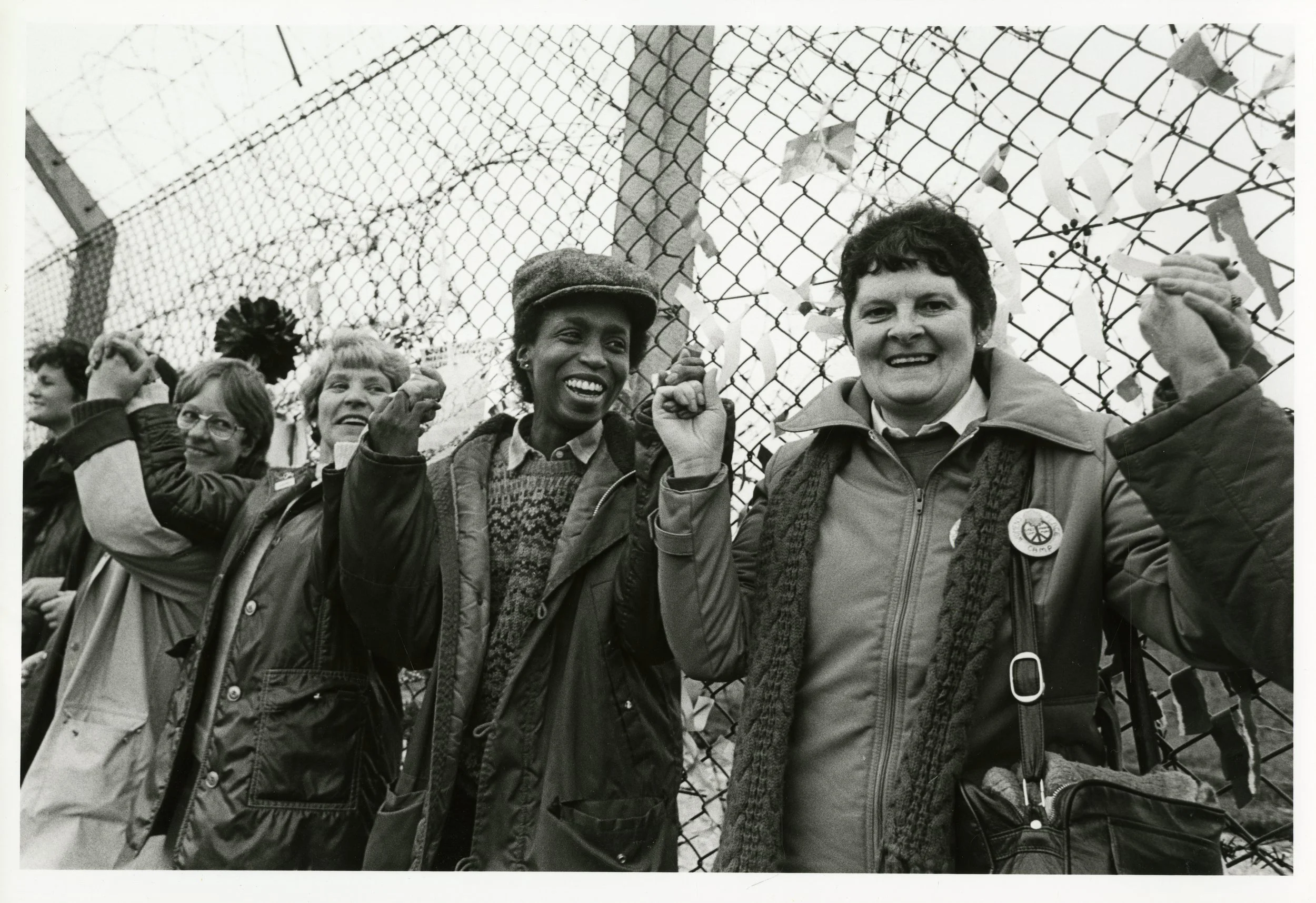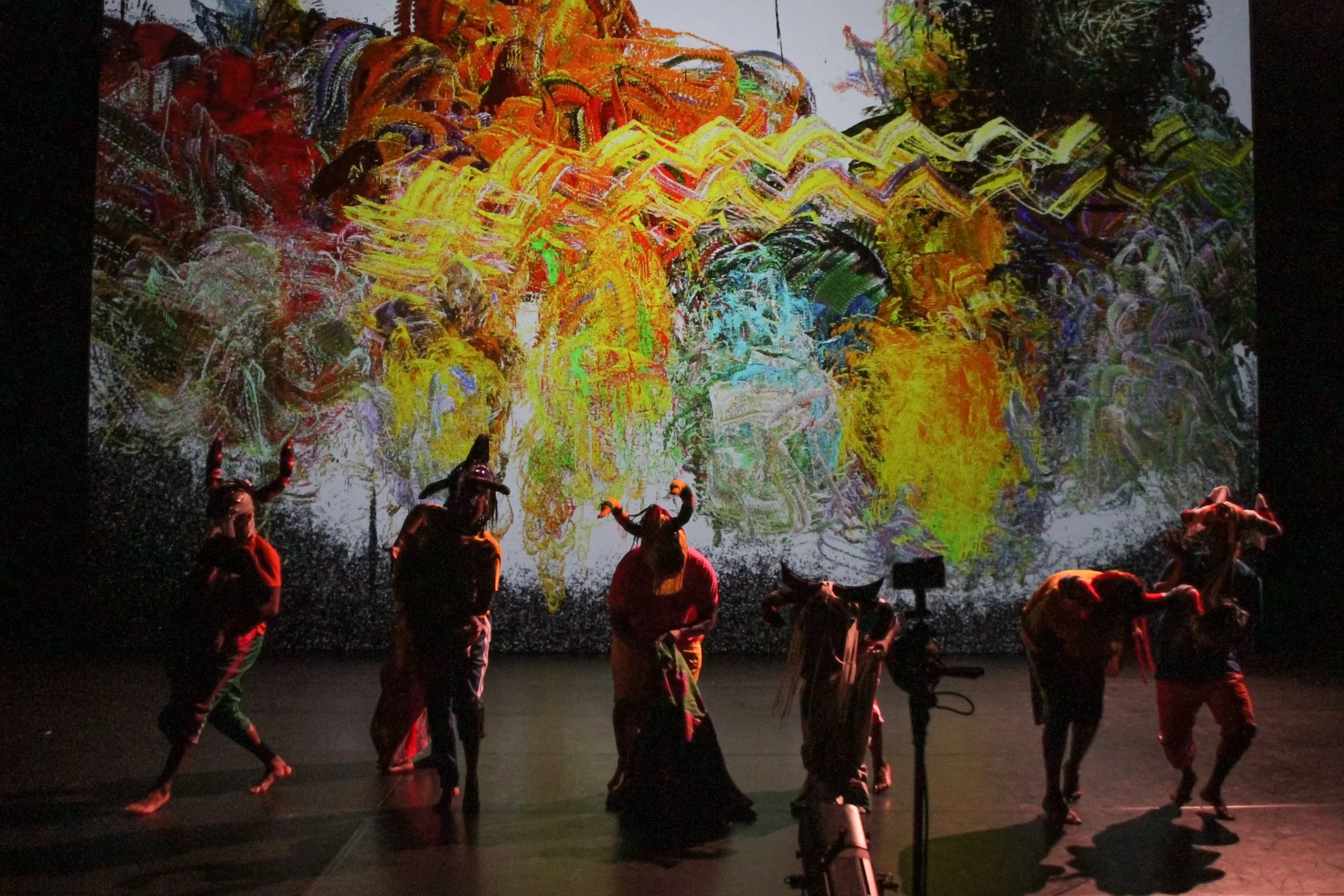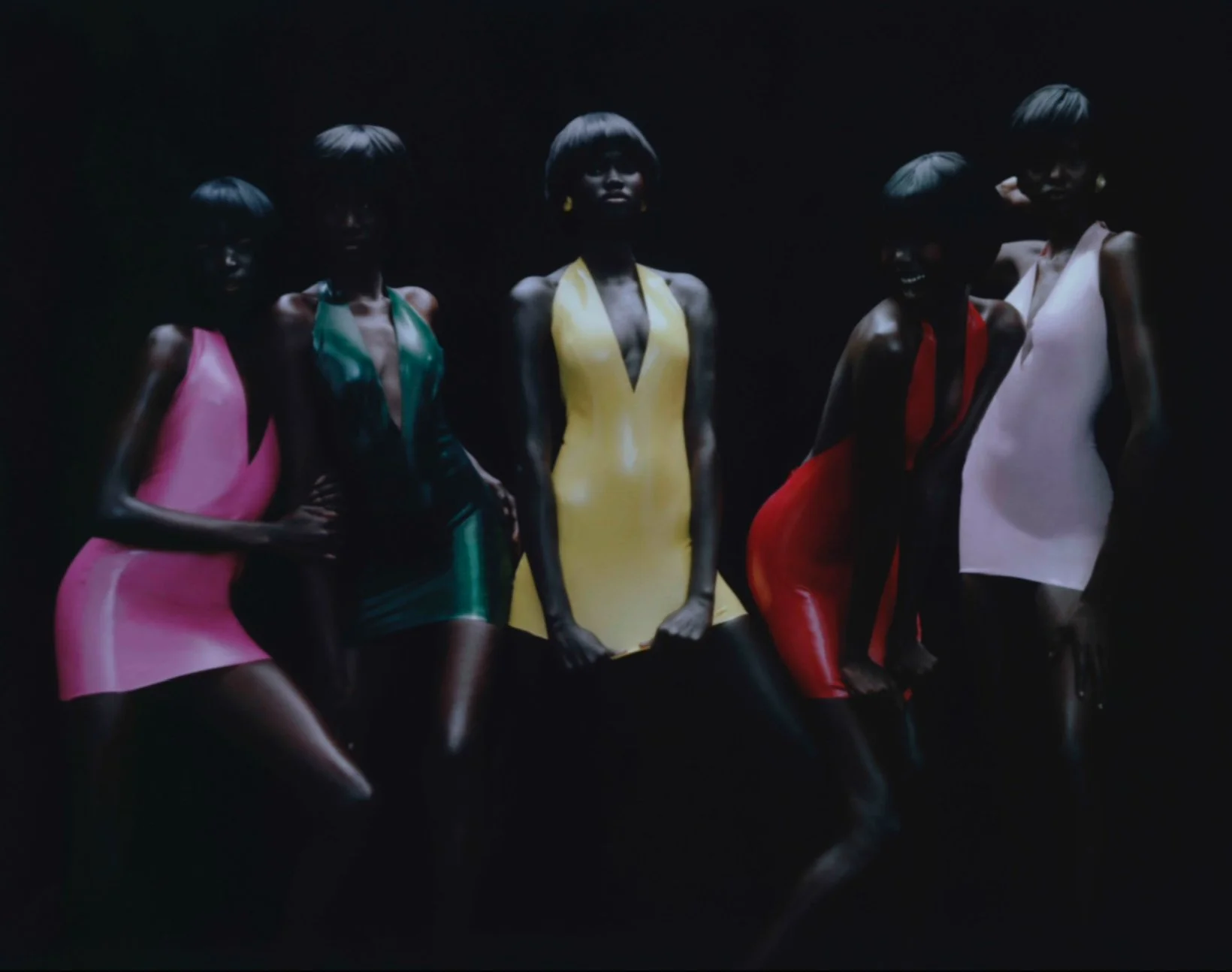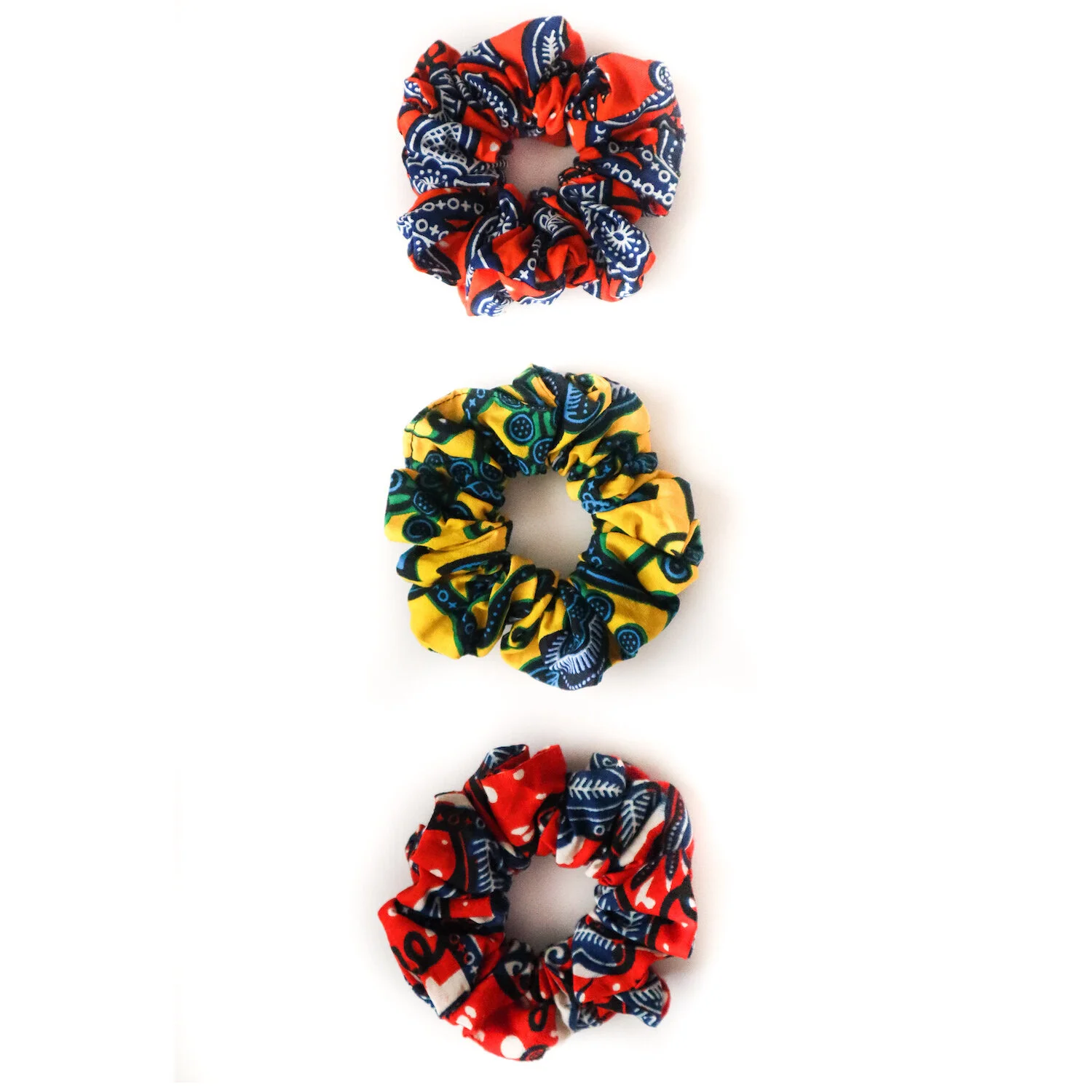Tavares Strachan: There Is Light Somewhere at Hayward Gallery review
The term "genius" comes to mind when considering Tavares Strachan's incredible projects and exhibitions. Born in 1979 in Nassau, Bahamas, Strachan now divides his time between New York City and Nassau. With a global exhibition history that continually pushes the boundaries of contemporary art, The Hayward Gallery is now presenting a mid-career survey of his work in There Is Light Somewhere.
Tavares Strachan, Robert, 2018. Blue neon, purple neon, Pyrex, transformers, MDF box. 64 H × 17 D × 17 W in. 58th International Art Exhibition - La Biennale di Venezia, May You Live in Interesting Times. Courtesy of the artist, photo.
Recently, Londoners were amazed by his life-sized installation, The First Supper, which reimagines the "Last Supper" with historical black figures. This powerful piece was featured in the Royal Academy's courtyard as part of their Entangled Pasts exhibition...
Tavares Strachan’s exhibition at The Hayward Gallery will undoubtedly further establish him as one of the most compelling, imaginative, and audacious artists of his generation. His work intersects art, science, history, and politics, utilising an astonishing variety of mediums. Themes of invisibility, displacement, and loss are central to his work, challenging historical narratives that exclude or obscure certain people and communities.
Tavares Strachan, The First Supper (Galaxy Black), 2023, Entangled Past, 1768 - now, Royal Academy of Arts. Photo by MTotoe.
Large parts of the exhibition focus on “Exploration” and highlight the forgotten stories of African polar explorer Matthew Henson, and astronaut Robert Henry Lawrence Jr. He has explained his interest in exploration partly stems from his childhood growing up on a small island and making it his job to figure out how to get off that island. His practice became finding ways to leave both metaphorically and physical. By unearthing hidden histories and lost stories the work aims to forge a more inclusive version of history.
Strachan became the first Bahamian to reach the North Pole in 2013, in the planning, he discovered Henson’s story and recreated his walk to the pole He has trained as an astronaut in Russia and blasted a sugarcane-fuelled rocket into the stratosphere, as part of a programme to interest young Bahamians in science and technology.
Multiple times while wandering the exhibition the words “Wow” and “Amazing” popped into my head, knowing full well that my curious mind would have me mining the internet to find out more about his work. One is prompted to dig deeper and explore what lies beyond what we already know.
Installation view of Tavares Strachan: There Is Light Somewhere. The Encyclopedia of Invisibility, 2014-18, and Six Thousand Years, 2018. Photo: Mark Blower. Courtesy the artist and the Hayward Gallery.
The Encyclopedia of Invisibility is a monumental project inspired by Strachan's childhood study of his grandfather's Encyclopedia Britannica. He questions the power structures that legitimise some stories while erasing others, leading him to create his own encyclopedia. This 2,550-page volume includes over 17,000 entries about people, creatures, places, objects, and artworks often invisible or overlooked due to various biases.
The encyclopedia is displayed as a large leather-bound book in a case, with many of its pages shown on the surrounding walls. These pages reveal the vastness of history that has been hidden from us. Some pages contain conflicting information, while others are damaged, defaced, or faded, highlighting the transient nature of knowledge and the need to constantly revise and expand our understanding of the past.
Installation view of Tavares Strachan: There Is Light Somewhere. Intergalactic Palace, 2024, and Ruin of a Giant (King Tubby), 2024. Photo: Mark Blower. Courtesy the artist and the Hayward Gallery.
This brings us to the new commission, Intergalactic Palace. On arrival, it feels like you have landed on another planet. The floor, made of iron oxide, mimics the mineral deposits found in East and South Africa and on Mars. The "palace" resembles a monumental thatched hut and contains a sound and light installation called 'Sonic Encyclopedia'. At the centre is a DJ music console surrounded by figures of past musicians, reflecting the Strachan's interest in the origins of Black music.
The hut is inspired by the structures used to crown kings in Uganda’s Kingdom of Buganda since the 14th century. The walls are lined with sheet music that has influenced much of today's music. The soundtrack includes quotes from Barack Obama and Haile Selassie. In the same room, there is a large sculpture of King Tubby, a key figure in Jamaican music who transformed dub into an art form. His influence helped fuse reggae and dub with early punk and post-punk, shaping the vibrant music scene of 1970s Britain.
The exhibition embraces a "more is more" approach, featuring two actors who move through the space, performing scenes of squabbling, loving, fighting, and sobbing. They interact with a neon artwork that gives the exhibit its name, There is a Light in Somewhere.
One discovers the light, in darkness
that is what darkness is for
but everything in our lives depends on
how we bear the light.
It is necessary, while in darkness
to know that there is a light somewhere,
to know that in oneself, waiting
to be found, there is a light
This work is with synchronised audio and we hear the words of James Baldwin (an American writer and civil rights activist) being read intermittently and echoing through the ground floor of the gallery.
Tavares Strachan, You Belong Here, Prospect 3 New Orleans, 2014. (Installation view from Prospect 3 Biennale, New Orleans, LA). Blocked out neon travelling installation on the Mississippi River. 30 ft x 80 ft on 100-ft barge. Courtesy of the artist, photo & video by Joe Vincent Grey.
One of the key things this exhibition asks of us is to think about who gets to feel they belong somewhere, and who doesn’t. The feeling that we belong somewhere is one of our most basic psychological and social needs as human beings and conversely one of the cruellest things we can do to other people is make them feel they don’t belong somewhere. Many pieces of Tavares’ art explore this crucial dynamic.
A sculpture demonstrating that desire to belong, is the giant neon sign “You Belong Here” on the outside of the building and comfortingly is the first thing you see on arrival. Tavares is quoted as saying, “If you really feel you belong somewhere you do not need to make that statement.”
Installation view of Tavares Strachan: There Is Light Somewhere. Black Star, 2024. Photo: Mark Blower. Courtesy the artist and the Hayward Gallery.
The Black Star Line sculpture, perched on the Hayward's flooded terrace with Westminster Bridge and London’s iconic red buses in the backdrop, is simultaneously jaw dropping and preposterous. Undoubtedly, it is set to become one of the most viewed artworks of the summer. The sculpture pays homage to Marcus Harvey of the Black Star Line, a shipping company owned and operated by black people, aimed at promoting trade and travel between the United States, the Caribbean, and Africa. However, the company's lifespan was brief, and none of its ships ever reached Africa. Feeling displaced and lacking a deep understanding of his ancestral continent, Strachan has dedicated himself to realising Garvey's vision. His sculpture features a model of the flagship SS Yarmouth's bow, symbolically pointing towards Africa.
In the last room, A Map of the Crown & Mine Field displays bronze busts featuring proud, strong, and beautiful faces with traditional African and Afro-Caribbean hairstyles made from human hair collected from barbershops in the Bahamas. Throughout the history of the slave trade, hair served as a tool of resistance, often concealing objects or coded messages within patterned braids. This artwork reminded me of Emma Dabiri's book Don’t Touch My Hair, which explores the history of black hair, coincidentally available for sale in the gallery gift shop.
Some will leave feeling seen and represented for the first time, while others may depart with a shifted worldview, perhaps reconsidering history as they've known it. It's rare to find an exhibition that embodies the essence of art so well: exciting, humorous, beautiful, confronting, mind-expanding, and challenging.
We typically refrain from rating exhibitions in our reviews, but in this instance, we can't resist—let's just say this one deserves 5 stars and then some.
Art x Food Recommendation
After visiting the exhibition, FLO London suggests Forza Wine, featuring a delightful terrace perfect for enjoying sunny summer days. They offer a weekly lunch special including a main course with your choice of house wine or soda (£15), available Monday to Friday from 12 to 4 pm.
Click here for a visual preview of the exhibition.
Date: 18 June — 1 September 2024. Location: Hayward Gallery, Southbank Centre. Price: £18. Concessions available & Southbank Centre Members go free. Book now.
A brief in conversation with Tavares Strachan
During our preview we had the privilege of asking Tavares a few questions.
Tavares Strachan, photo by Miho Suzuki, courtesy of the artist.
In terms of the time it takes, did you ever feel anxious that it (The Encylopedia of Invisibility) might be taking you away from all the other things you wanted to do? Or is it kind of a hobby whereby you just keep adding to it.
It took a long long time and it is always happening. I’ll have a conversation with someone like you and they will say “Did you know so and so…” and I’ll say “No” and write it down and go to my team to add it.
Each time you mount this exhibition there will be a different version?
It is always growing, and you just have to keep adding. It grows over time then there will be a new version.
Is there any of the stories that really stuck in your mind? “The One” that just won’t leave you?
The one most important to me is Matthew Alexander Hensen and he is someone you should know. He is the reason why I made this room. If it wasn’t for him this room wouldn’t exist. He is the first man to make it to the North Pole in 1909. So now imagine this black man making it to the North Pole in 1909, think about what it takes. How did he do it? And that I think that is really the story that is still the most riveting because it connects so many of the things I care deeply about, exploration, history, time, space, overcoming, belonging so he is really a critical piece of it. This room, if you were to create a time capsule of the human experience and you wanted to send it into space or bring a sentient being in to say this is a chunk of human civilisation across the board. I think this would be their space. This, and the Intergalactic Palace upstairs. Civilisation in a nutshell from invention to cross migration, to mathematics and science to music and sound and the written word.
Are you an avid reader who reads non-stop from the moment you wake up.
Yes I read everything sports, politics, economics, oration or dogma.
Is it ever to much information for you? Do you ever think “I need to sit down and cocoon somewhere dark and quiet.”?
I think the human brain is quite capable of processing way more information than I think we allow ourselves to. I think we should just give ourselves more credit.
Words by Natascha Milsom













































The Cinnamon Club had completely flown under the radar for me. It is in a pocket of London I rarely visit, and even if I did, the building’s exterior gives little indication of what’s inside. But now that I’ve discovered it, I already have plans to return with my husband - and in my mind, a list of friends I would recommend it to…